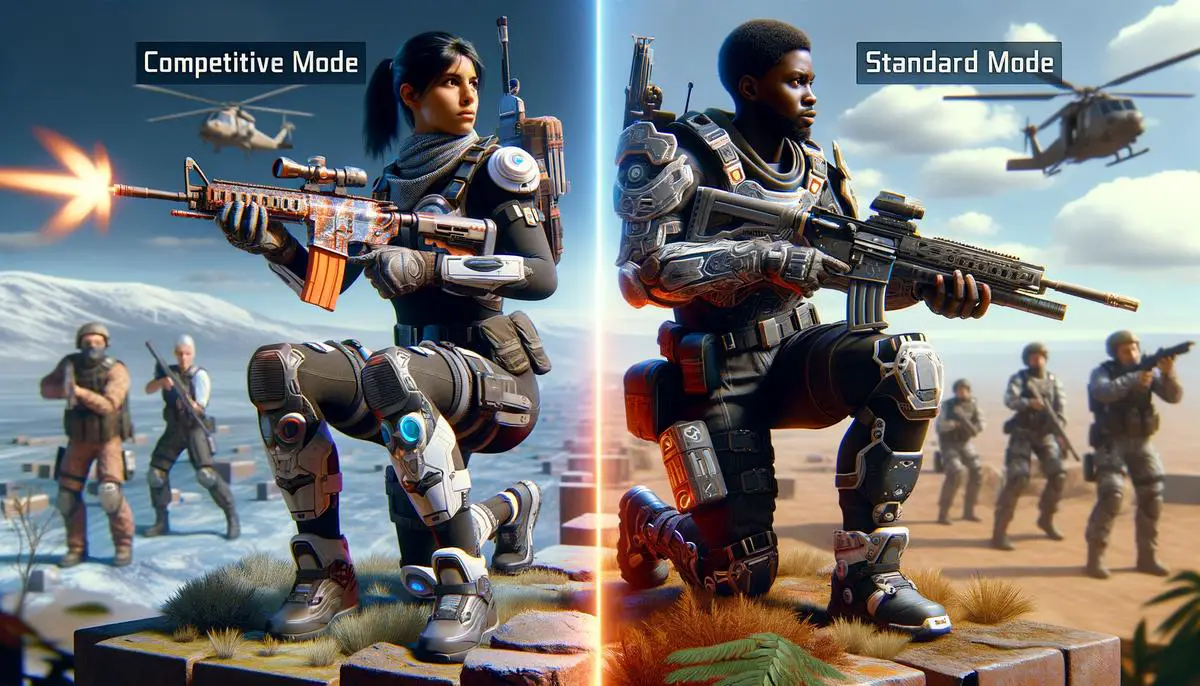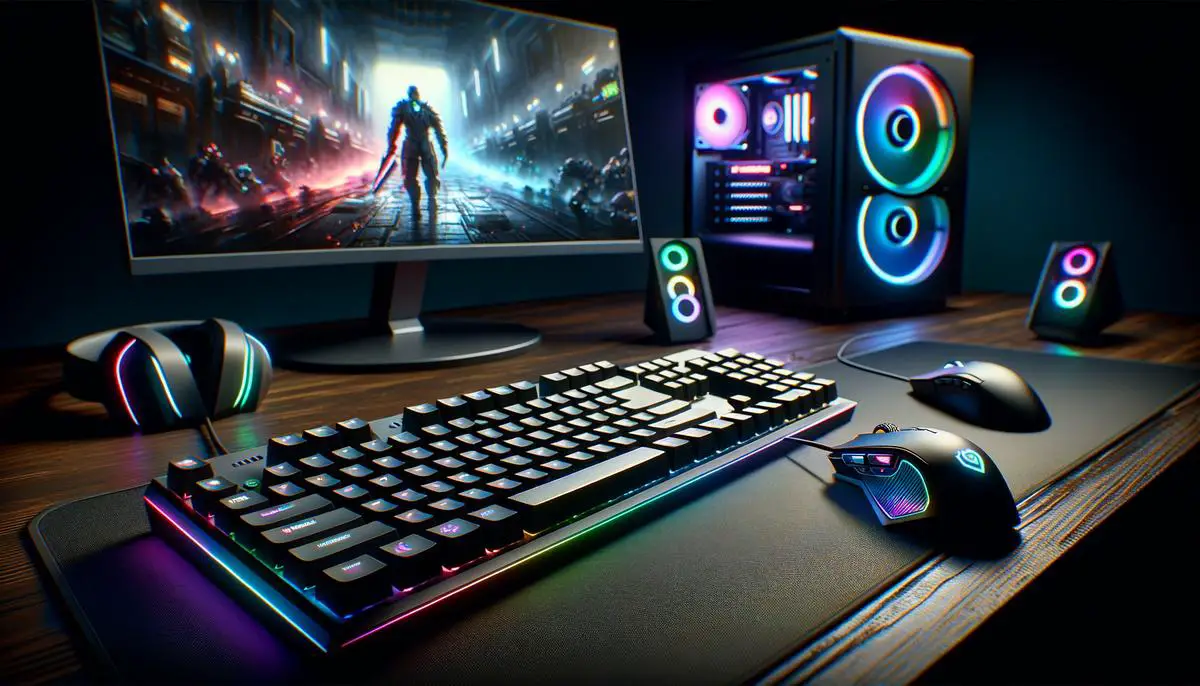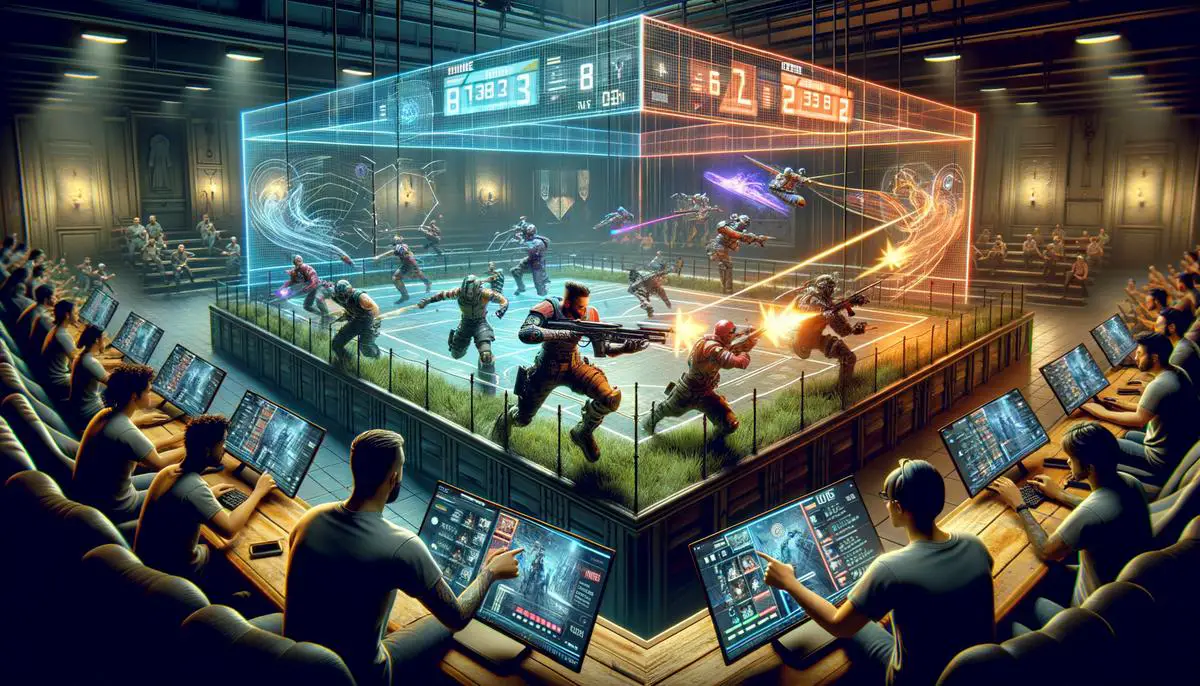Fortnite, a game known for its thrilling Battle Royale mode, offers players a different challenge through its Arena Mode, where competitiveness and skill are taken to the next level. This exploration provides an understanding of what sets Arena Mode apart, emphasizing its structured competitive environment, strategic depth, and the essential skills and preparations needed to excel. By dissecting the mechanics, strategies, and the role of adaptation within this mode, players can gain insights into achieving success and making a significant leap into the world of Fortnite’s competitive play.
Understanding Arena Mode Mechanics
Fortnite’s Arena Mode vs. Standard Gameplay
In the world of Fortnite, players are typically familiar with the Battle Royale mode, a fast-paced, survival game where the last player or team standing wins. However, for those seeking a more competitive and challenging experience, Fortnite’s Arena Mode offers a distinct departure from the standard gameplay. Introduced to provide a ranked, competitive environment, Arena Mode sets itself apart through several key differences that cater to players aiming to refine their skills and compete at higher levels.
One of the primary distinctions of Arena Mode is its ranking system. Unlike the casual play found in standard modes, where players of all skill levels are mixed, Arena Mode places players in divisions and ranks based on their performance. Starting from the Open League, players must earn Hype points to advance through the divisions, ultimately aiming to reach the Champion League. This progression system adds a significant layer of competitiveness and motivation, as advancing through the ranks requires consistent performance, strategy adaptation, and skill improvement.
Hype points, the currency of progression in Arena Mode, are earned or lost based on players’ placements and eliminations in matches. This scoring system encourages not just survival, but aggressive playstyles to secure points through eliminations. The risk of losing Hype points for poor performance adds a layer of pressure not found in standard gameplay, pushing players to continuously improve and rethink their strategies.
Furthermore, Arena Mode implements stricter gameplay rules and settings to level the playing field and increase the mode’s competitive integrity. For instance, the availability of certain weapons and items may differ from standard modes, focusing on a balanced and competitive arsenal. Additionally, matchmaking in Arena Mode is skill-based, ensuring players are pitted against others of similar skill levels, providing fairer and more challenging matches.
Another unique aspect of Arena Mode is its role as a gateway to official Fortnite competitive events, such as the Fortnite Champion Series (FNCS). Players must achieve a certain rank in Arena Mode to qualify for these events, making Arena not just a playground for skill enhancement but also a stepping stone for aspiring esports professionals.
Lastly, the strategic depth in Arena Mode is significantly more pronounced. With more at stake and against equally or more skilled opponents, players must develop sophisticated strategies, from landing spots to resource management and in-game decision-making. This environment fosters a continuous learning experience, where adaptability and game sense become crucial for success.
In conclusion, Fortnite’s Arena Mode offers a structured, competitive environment that starkly contrasts the more relaxed and unpredictable nature of standard gameplay. Its ranking system, emphasis on skill-based matchmaking, and role as a conduit to professional play distinguish it as a mode designed for those seeking to test their skills on a higher level. Arena Mode challenges players to evolve, pushing the boundaries of their abilities in the pursuit of competitive excellence.

Strategies for Success in Arena Mode
Mastering Communication and Team Play
One critical aspect that can drastically improve a player’s performance in Arena Mode is mastering communication and team play. Given the highly strategic nature of Arena Mode, the ability to effectively communicate with teammates cannot be overstressed. This involves not only calling out enemy positions or strategies but also planning and executing complex maneuvers that take advantage of each team member’s strengths. Successful teams often use voice chat to maintain a real-time, open line of communication, synchronizing their actions to outmaneuver opponents.Improving Mechanical Skills
At its core, Arena Mode still relies heavily on the fundamental mechanical skills that are essential in any competitive game: aiming, movement, and reaction time. Players looking to elevate their performance must dedicate time to honing these skills. This can involve practicing in aim trainers, studying and mimicking the movement patterns of top players, and engaging in drills that improve reaction time. The increased precision, agility, and responsiveness that come from improved mechanical skills can significantly impact a player’s effectiveness in high-stakes Arena Mode matches.Utilizing Game-Specific Knowledge
A deep understanding of the game’s mechanics, map layouts, and item functionalities provides a substantial advantage in Arena Mode. Players should make an effort to learn the ins and outs of each map, including common player paths, strategic positions, and how different game mechanics can be exploited in various situations. Furthermore, knowledge about the timing of item spawns, the effectiveness of different weapons or abilities in specific scenarios, and understanding how to counter popular strategies can be pivotal. This type of game-specific knowledge allows for more strategic play and better decision-making under pressure.Studying and Adapting to the Meta
The competitive landscape of any game is ever-changing, with certain strategies, characters, or weapons becoming more or less effective as updates and patches are released. Players committed to excelling in Arena Mode must stay abreast of the current meta — the prevailing trends in successful gameplay tactics and team compositions. This involves not only keeping track of patch notes and community discussions but also watching matches played by high-ranking and professional players to understand why certain strategies are effective. Adapting one’s playstyle to incorporate successful elements of the meta can lead to more consistent performance in Arena Mode.Investing in the Right Equipment
While not a substitute for skill, investing in high-quality gaming equipment can remove barriers to peak performance. This includes ensuring a stable and fast internet connection to minimize lag, as well as acquiring peripherals like a responsive mouse, a mechanical keyboard, and a high-refresh-rate monitor. These tools can enhance precision, comfort, and the overall gaming experience, allowing players to perform at their best.In elevating performance in Arena Mode, players must adopt a multifaceted approach. This involves not only improving individual skill and knowledge but also mastering team coordination, staying adaptive to the competitive landscape, and optimizing their gaming setup for peak performance. With dedication and a strategic approach to improvement, players can significantly boost their prowess in the competitive arena.

The Role of Meta in Arena Mode
The continually evolving meta in Arena Mode isn’t just about keeping the gameplay fresh; it directly influences players’ approach to each match, demanding constant adaptation and refinement of tactics. As game developers roll out new updates, introducing or adjusting characters, items, and game mechanics, the meta – or the most effective tactics available – undergoes shifts. This dynamic changes the landscape of Arena Mode gameplay significantly.
Firstly, understanding the current meta is crucial for selecting the right characters or loadouts. A character or item that was previously considered lower tier can surge to the top if recent changes favor their abilities, altering team compositions and strategies. Players often find themselves revisiting their choices, experimenting with different combinations to exploit the strengths highlighted by the new meta.
Adaptation extends beyond character selection. Map strategies and positioning can also be heavily impacted. For instance, changes that favor long-range engagements will see players preferring sniper-friendly areas, adjusting their movement and positioning to accommodate. Conversely, a shift towards close-quarters combat would see a higher emphasis on characters with abilities suited for such encounters, impacting where and how teams choose to engage.
Moreover, the changing meta influences the pace of the game. Updates that promote aggressive playstyles can lead to faster, more confrontational matches, while those favoring defensive strategies might result in longer, more strategic engagements. Arena Mode players must adjust their pacing accordingly, developing patience in slower metas or honing their reflexes and decision-making in faster ones.
Another aspect affected by the meta is team dynamic and roles. As certain characters or roles become more or less viable, teams may need to renegotiate who plays what. This can lead to a significant learning curve as players adapt to new responsibilities or master characters they’re less familiar with, all in the name of aligning with the most effective tactics of the current meta.
Finally, the meta’s evolution encourages a deeper engagement with the game. Players are compelled to keep up with patch notes, engage in community discussions, and watch professional gameplay to understand and anticipate shifts. This continuous learning process is vital for maintaining competitive edge in Arena Mode, as understanding why the meta changes can be as crucial as knowing how it has changed.
In Arena Mode, success isn’t just about mastering the gameplay mechanics or perfecting strategies that have worked in the past; it’s about staying fluid, ready to evolve alongside the game. The changing meta ensures that Arena Mode remains a challenging and engaging experience, pushing players to innovate and adapt in their quest for dominance.

Prepping for Tournaments and Competitive Events
Transitioning from Arena Mode to official Fortnite tournaments signifies stepping into a whole new level of competitive gameplay. Beyond mastering the ins and outs of Arena Mode, there are several pivotal shifts players must embrace to thrive in the landscape of official tournaments.
Firstly, understanding the psychological aspect of competitive play is paramount. Official Fortnite tournaments introduce a layer of pressure and expectation not found in Arena Mode. Players must cultivate mental resilience, learning to manage stress, maintain focus, and stay motivated even when faced with setbacks. This mental fortitude is what separates those who can consistently perform in high-stakes environments from those who crumble under pressure.
Preparation is another key factor in this transition. While raw skill and in-game knowledge are crucial, thorough preparation can give players a significant edge. This includes scouting opponents, analyzing their play styles, and anticipating strategies. Knowledge of past tournament outcomes and understanding the tendencies of successful players can provide insights into what it takes to win at the highest levels.
Adapting to the tournament format is also essential. Unlike the continuous play of Arena Mode, official tournaments are often structured in stages, with different rules and objectives at each phase. Players must be versatile, capable of adjusting their strategies and playstyles to fit the specific demands of each tournament stage.
Networking and team-building play a vital role as well. Success in official Fortnite tournaments frequently hinges on the ability to work effectively as part of a team. This includes finding the right teammates whose skills complement one’s own, as well as building a rapport that facilitates seamless communication and coordination during matches.
Lastly, familiarity with the logistical aspects of tournament play is indispensable. This encompasses everything from registering for tournaments on time, understanding the schedule, to ensuring one’s gaming setup meets the requirements of the event. Attention to these details ensures that players can focus on their performance without unnecessary distractions.
In conclusion, making the leap from Arena Mode to competing in official Fortnite tournaments is a multifaceted challenge. It demands not just advanced gaming skills, but also mental resilience, strategic preparation, adaptability, strong team dynamics, and meticulous attention to logistics. For players willing to embrace these challenges, the world of Fortnite competitive play offers a rewarding arena to test their skills against the best in the game.

Embarking on the path to mastering Fortnite’s Arena Mode and transitioning into the competitive realm is a testament to a player’s dedication, strategic acumen, and adaptability. This exploration has shed light on the intricacies and demands of excelling in such an environment, highlighting the importance of continuous improvement, teamwork, and a deep understanding of the game’s evolving strategies. For those committed to refining their skills and pushing the boundaries of their competitive spirit, Arena Mode stands as a formidable arena where champions are forged, strategies are tested, and legends are born.
- Guide to Life Is Strange: True Colors Ch. 1 Choices - April 4, 2024
- Catching Spiritomb in Pokemon BDSP - April 4, 2024
- Mastering Life Is Strange: Key Choices in Chapter 1 - April 4, 2024
Visits: 0








